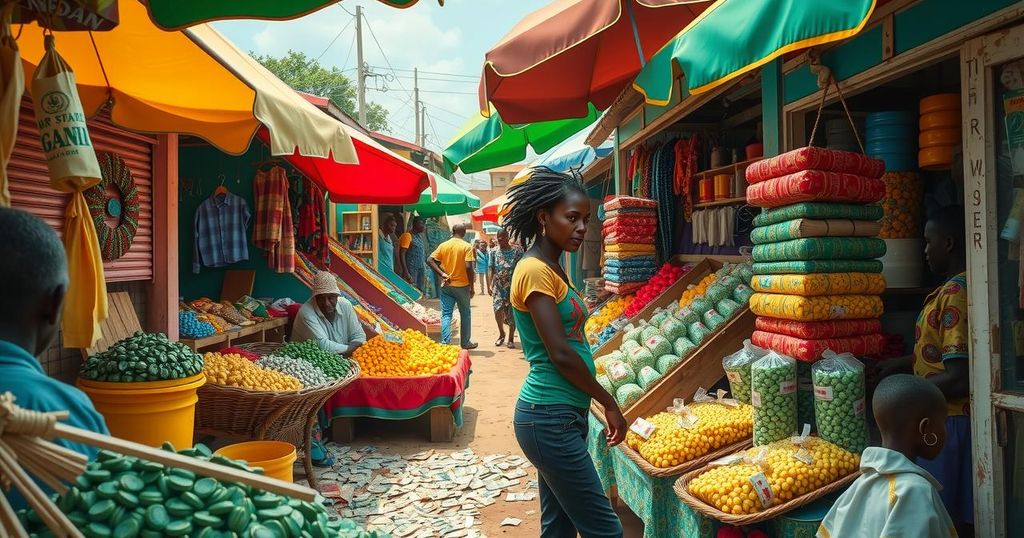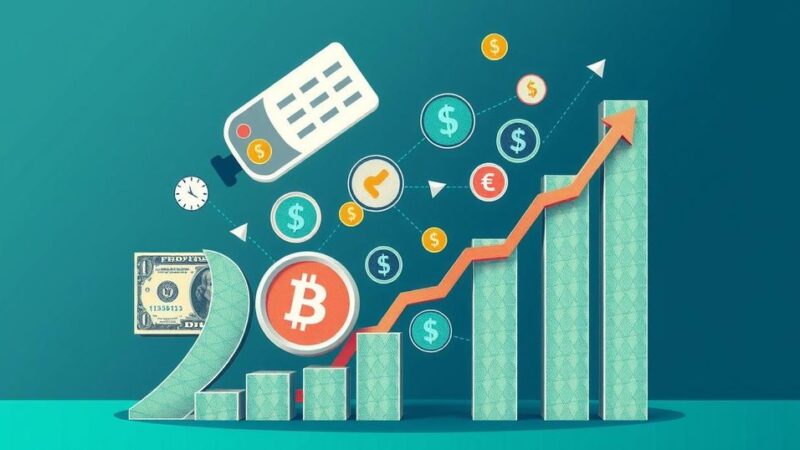Rwanda’s economy is projected to grow by 8.9% in 2024, driven by strong consumer spending that accounts for 70% of GDP. Government spending and digital finance innovations have increased liquidity, while manufacturing and remittances also contribute significantly. However, excessive money circulation raises concerns over trade deficits, inflation risks, and low investment levels, necessitating a focus on sustainable economic strategies.
Rwanda’s economy is currently experiencing significant growth, with the Gross Domestic Product (GDP) projected to rise by 8.9% in 2024, reaching Frw 18,785 billion. This data was released by the National Institute of Statistics of Rwanda (NISR). The report identifies strong consumer spending as the primary driver of this economic expansion, accounting for 70% of the GDP. However, such reliance on consumer expenditure raises concerns regarding the long-term sustainability of Rwanda’s economic model.
The NISR report attributes the substantial increase in circulation to several factors, primarily the notable growth in the wholesale and retail trade sector, which expanded by 18% in 2024. This growth is indicative of increased household and business spending across various industries, such as supermarkets and clothing outlets. Additionally, the hospitality sector experienced an 11% growth, demonstrating a rising trend in dining out and leisure activities aligned with Rwanda’s ambitions to enhance its tourism sector.
Government spending has also played a pivotal role, with expenditures rising by 15% in 2024 as funds were channeled into infrastructure and social programs, further increasing liquidity in the economy. This government initiative has ensured more disposable income reaches households, thus promoting spending in crucial sectors like health and education.
Moreover, the information and communication sector, particularly mobile money and fintech platforms, has seen an unprecedented 25% growth. The ease of digital transactions has accelerated the liquidity of money in circulation, as platforms like MTN Mobile Money and Airtel Money facilitate quick financial exchanges.
Rwanda’s manufacturing sector also contributes to economic activity, with a 7% expansion noted in 2024. Industries producing metal products, machinery, and textiles have particularly flourished, attributed in part to the ban on second-hand clothing, which has heightened demand for local goods. This growth results in job creation, consequently increasing disposable income and consumption levels.
Remittances from the Rwandan diaspora remain a vital source of liquidity, despite a slight decline to $502 million in 2024. This influx of funds is utilized for home investments and family welfare, bolstering household incomes. Foreign aid continues to support economic sectors like education and healthcare, ensuring steady funds flow into the economy, particularly as private investments are still developing.
Nonetheless, the economy faces potential risks associated with excess liquidity. A significant portion of consumer goods in Rwanda is still imported, contributing to a possible widening trade deficit. This dependency may result in increased inflation rates and a weakened Rwandan franc. Additionally, low savings and investment levels raise concerns about future economic resilience.
As Rwanda’s GDP shows promising growth, it is essential to cultivate a robust investment culture to reduce import dependence and stimulate domestic production. The country needs to balance liquidity with strategic investments in critical sectors to ensure sustainable growth. Furthermore, while GDP growth appears promising, the drop in GDP per capita suggests that economic benefits are not equally shared among the population, raising questions about equitable wealth distribution amidst evolving economic conditions.
In conclusion, Rwanda’s economy is witnessing a remarkable growth trajectory, significantly influenced by consumer spending, government expenditure, and the expansion of digital finance. However, the challenges posed by excessive liquidity, reliance on imports, and low savings must be addressed to ensure the long-term sustainability of this growth. A balanced approach focusing on investment and domestic production will be crucial for transforming Rwanda into a self-reliant economic powerhouse.
Original Source: www.ktpress.rw






